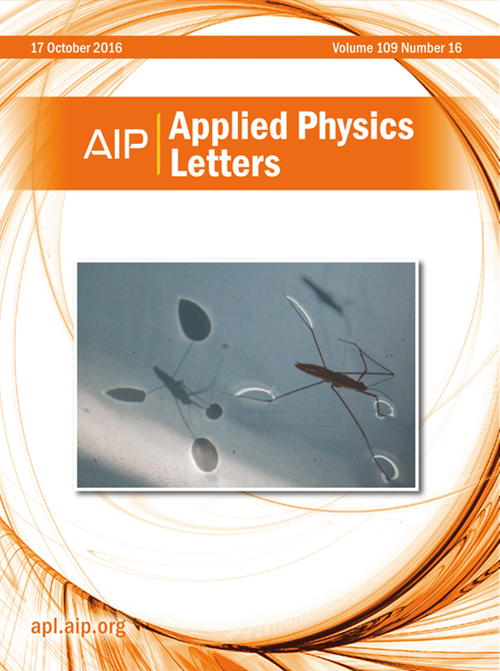Spin-orbit torque switching in Co/Ni multilayers with strong domain wall pinning
IF 3.5
2区 物理与天体物理
Q2 PHYSICS, APPLIED
引用次数: 0
Abstract
Spin–orbit torque (SOT) switching is a promising candidate mechanism to be applied in the spintronic devices. Here, we report the SOT switching in the [Co/Ni] × n multilayers with maze domain structures. The experimental results show that the SOT switching efficiency strongly depends on the magnetic structure of the ferromagnet (FM) layer. With the increase in cycle number of [Co/Ni] × n multilayers, the switching ratio rapidly decreases, even cannot present the magnetization switching. This switching behavior can be attributed to the strong domain wall pinning in the samples with the maze domain structure. Moreover, although the samples in this work have the same spin current sources, the estimated SOT efficiencies vary greatly, suggesting that the SOT efficiency in a FM/heavy metal (HM) structure depends not only on the spin Hall effect and/or Rashba effect but also on the magnetic structure of FM layer. This work provides a better understanding for the nature of SOT switching in the FM/HM heterostructures with maze domain.求助全文
约1分钟内获得全文
求助全文
来源期刊

Applied Physics Letters
物理-物理:应用
CiteScore
6.40
自引率
10.00%
发文量
1821
审稿时长
1.6 months
期刊介绍:
Applied Physics Letters (APL) features concise, up-to-date reports on significant new findings in applied physics. Emphasizing rapid dissemination of key data and new physical insights, APL offers prompt publication of new experimental and theoretical papers reporting applications of physics phenomena to all branches of science, engineering, and modern technology.
In addition to regular articles, the journal also publishes invited Fast Track, Perspectives, and in-depth Editorials which report on cutting-edge areas in applied physics.
APL Perspectives are forward-looking invited letters which highlight recent developments or discoveries. Emphasis is placed on very recent developments, potentially disruptive technologies, open questions and possible solutions. They also include a mini-roadmap detailing where the community should direct efforts in order for the phenomena to be viable for application and the challenges associated with meeting that performance threshold. Perspectives are characterized by personal viewpoints and opinions of recognized experts in the field.
Fast Track articles are invited original research articles that report results that are particularly novel and important or provide a significant advancement in an emerging field. Because of the urgency and scientific importance of the work, the peer review process is accelerated. If, during the review process, it becomes apparent that the paper does not meet the Fast Track criterion, it is returned to a normal track.
 求助内容:
求助内容: 应助结果提醒方式:
应助结果提醒方式:


